Customized eyewear for differently-abled users
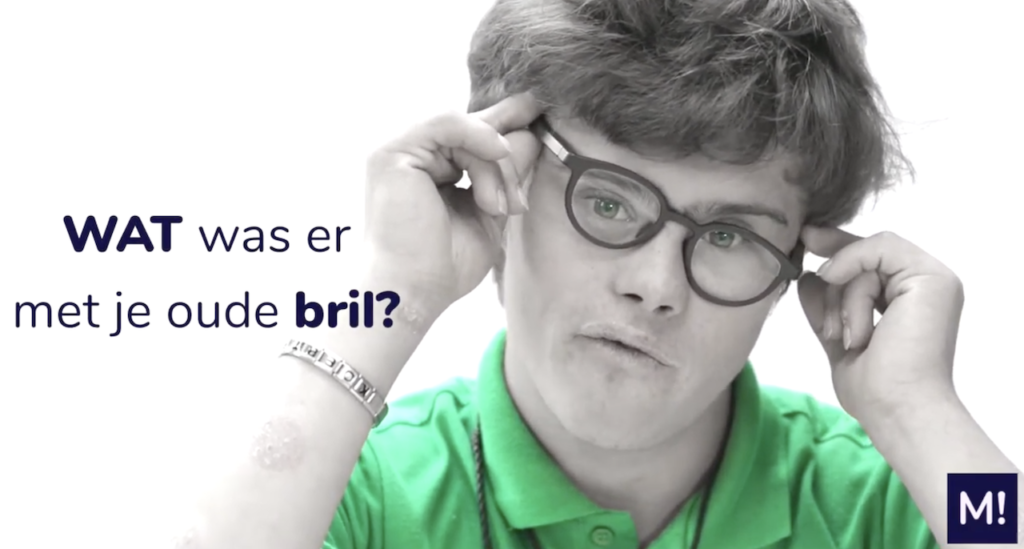
Partner: Made4Eyes
Motivation
Made4Eyes B.V. (M4E) has been customizing eyewear since 2015 using 3D scan and 3D printing technology. M4E uses a Structure Sensor from Occipital to scan the spectacle wearer. At the beginning of 2019, M4E launched a new brand, custom-made glasses from Maat!, aimed at people who do not have a standard face shape. These are often people with a medical condition, such as Down syndrome, people with a craniofacial (skull) disorder or other conditions.
In the past few years, M4E has noticed two main challenges in their field of practice. The 3D scanning process on the one hand, and the registration accuracy on the other hand. The latter particularly behind the ear.
Problem definition
Some of the clients are (small) children and have a mental disability, which makes it difficult for them to sit still for 10 seconds, which is needed for a scan to be properly registered (see image).
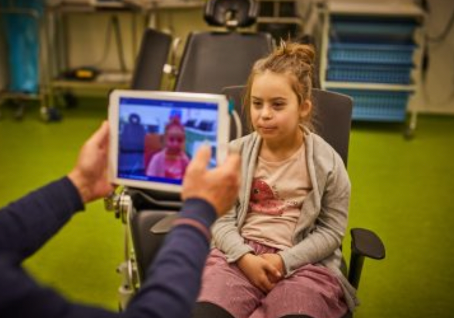
Another problem that occurs is the ergonomic accuracy. The ends of the legs (ear tips) are often not well enough shaped for small children and people with a strongly deviating skull shape. In these cases, the frames offer too little support, causing the glasses to sag. Since the 3D-scan doesn’t reach the area behind the ear, this geometric information is missing. By researching the ergonomics of the skull in this target group and in particular the shape behind the ear, Maat! wants to obtain insight into the similarities and differences between the age groups and any common disorders. The shape of the nose and the weight of the glasses (as a result of increasing strength) will also determine the design of the spring tips. These two problems resulted in two research questions:
“how to design a 3D headscanner suitable for the target group of young differently-abled children?”
And
“how to improve the registration of the skull-geometry behind the ears?”.
These two research questions were used as the starting point for two sub-projects within Fieldlab UPPS.
Activities and task divisionS
Head scanner project
For each of the two sub-projects, a graduation student was recruited. For the head scanner project, the student did research on scanning technologies, medical conditions, and customer interactions, after which a working scanner was build. First the current 3D-head scanning method was evaluated. Then a new layout had to be designed that met the requirements of the project. After a thorough research of all scanning technologies, the use of a photogrammetry-based system where multiple images are stitched together to form the final scan was chosen. This scanner includes three Intel Real sense scanners combined in a 3D-printed enclosure (see figure below). The scanner properties and orientation were optimized for the use case, allowing as much distance from the head as possible, to make the client feel more at ease.
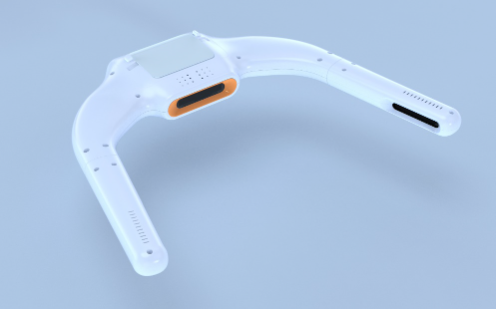


Eartip project
In the ear tip project, the student did research on scanning devices and usage of molds to get the geometric information of the area behind the ears of clients and volunteers.
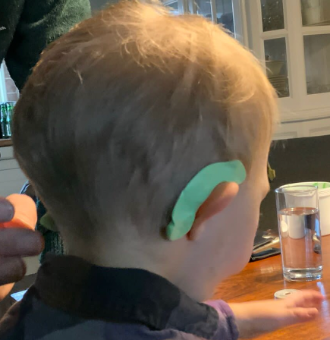
The statistical analyses based on the 3D-scan information resulted in various designs for ear tips of the temples. The design still has to be optimized for every client as the individual shape can be more or less pronounces than the average that came out of the statistics. The figure below shows an example of the modified temple tip can be seen: the rounding of the tip follows the curve of the ear better, and a very noticeable bulge is visible where the skull of the client is concave. The better the ear tip follows the shape of the skull, the more grip and less pressure the glasses will give.
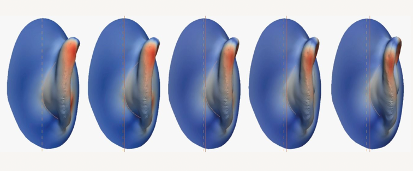
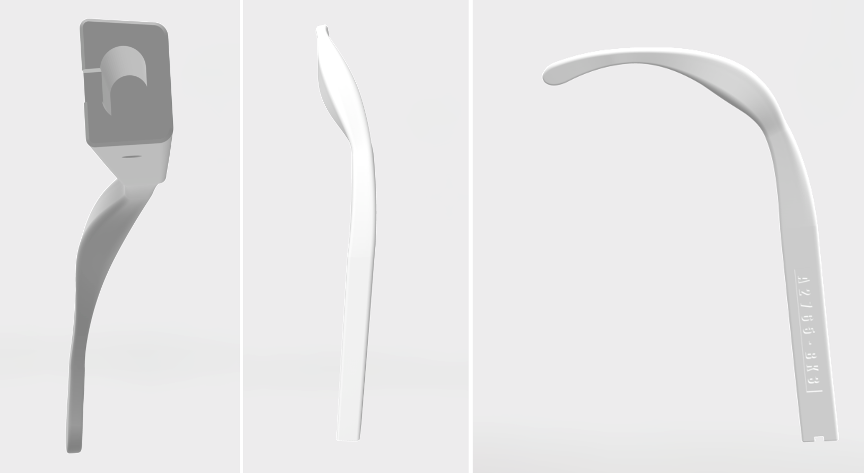
Knowledge development & dissemination
The two sub-projects resulted in a great amount of knowledge and experience for the company M4E in the use of 3D scanning technologies for their business. In the head scanner project, a working scanner was developed and delivered for M4E to use in their practice. However, there are a number of improvements to be made to this device to be fully optimized for their business. The main improvement could be made in terms of embodiment and/or interaction, as the current scanner causes some clients to feel slightly intimidated or claustrophobic.
As for the ear tip project, there were some new and creative approaches to the problem. This project could be enhanced by including more participants in the study and allowing for more differentiation in geometry.


